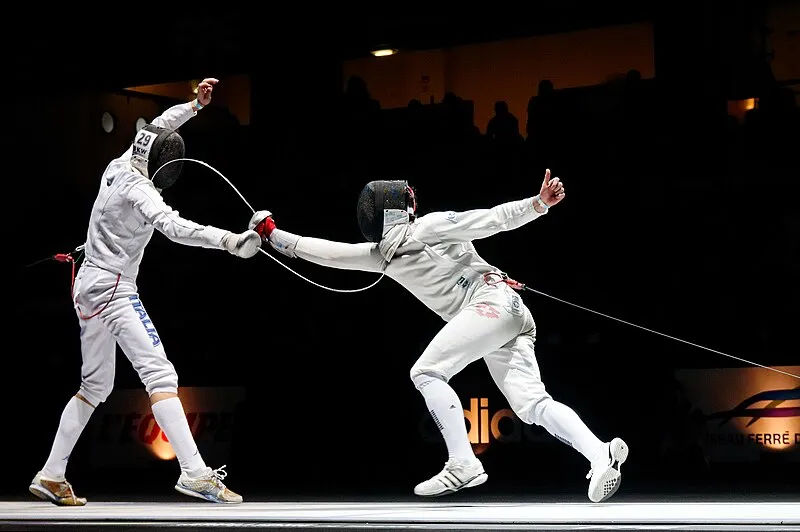What is Fencing?

Hire Arrive
Sports
about 1 year ago

Fencing, often mistaken for building fences, is actually a dynamic and highly skilled combat sport. It's a duel between two competitors, armed with lightweight swords, who try to touch their opponent's valid target area while protecting their own. Far from a brutal brawl, fencing demands precision, speed, strategy, and remarkable athleticism. It's a sport of finesse, where a split-second decision can be the difference between victory and defeat.
There are three main weapons used in competitive fencing:
* Foil: This is a lightweight, thrusting weapon. Only the torso (from the shoulders to the groin) is a valid target area. Right-of-way rules are in place to determine who scored a touch if both fencers hit simultaneously.
* Épée: This heavier weapon also allows for thrusting attacks, but unlike foil, the entire body is a valid target. There are no right-of-way rules; the first fencer to register a touch scores.
* Sabre: The sabre is a curved, cutting and thrusting weapon. The valid target area includes the entire body from the waist up. Similar to foil, right-of-way rules apply.
Each weapon requires a different style of fencing. Foil demands precise footwork and quick, controlled thrusts. Épée emphasizes strategic positioning and a more powerful, direct approach. Sabre, with its wider range of attacks, necessitates rapid reactions and a combination of cutting and thrusting techniques.
Beyond the Weapons:
Fencing is more than just the weapons; it's a complex system involving:
* Footwork: Precise and agile footwork is crucial for maintaining distance, creating angles, and executing attacks. Fencers use a variety of steps and lunges to move around the piste (fencing strip).
* Bladework: This involves the skillful manipulation of the weapon to parry (deflect) an opponent's attack, riposte (counter-attack), and execute various offensive maneuvers.
* Strategy and Tactics: Fencing is a game of wits as much as it is a game of skill. Fencers need to anticipate their opponent's actions, adapt their strategy, and exploit any openings.
* Physical Fitness: Fencing requires a high level of cardiovascular fitness, strength, agility, and flexibility. It's a demanding sport that requires consistent training.
Beyond Competition:
While competitive fencing is a thrilling spectacle, the sport offers numerous benefits beyond the medals and trophies:
* Improved Fitness: Fencing provides a full-body workout, improving cardiovascular health, strength, and flexibility.
* Mental Acuity: The strategic and tactical aspects of fencing sharpen mental focus and decision-making skills.
* Discipline and Self-Control: Fencing demands discipline, patience, and self-control, qualities that extend beyond the sport.
* Social Interaction: Fencing clubs provide a supportive and social environment where individuals can connect with others who share a passion for the sport.
In conclusion, fencing is a captivating and multifaceted sport that combines athleticism, strategy, and precision. Whether you're looking for a challenging workout, a competitive outlet, or a new hobby, fencing offers a unique and rewarding experience.